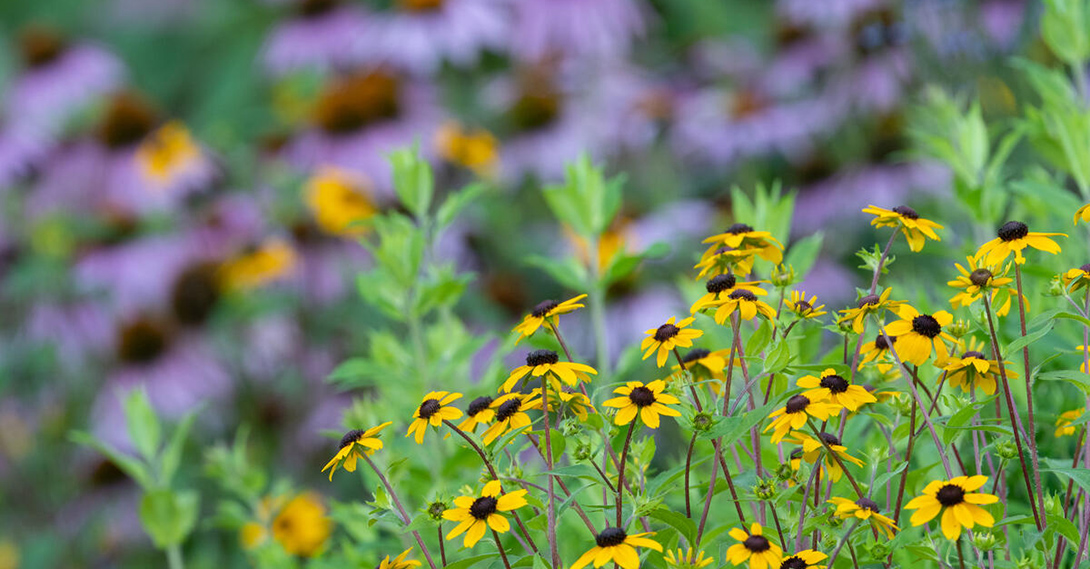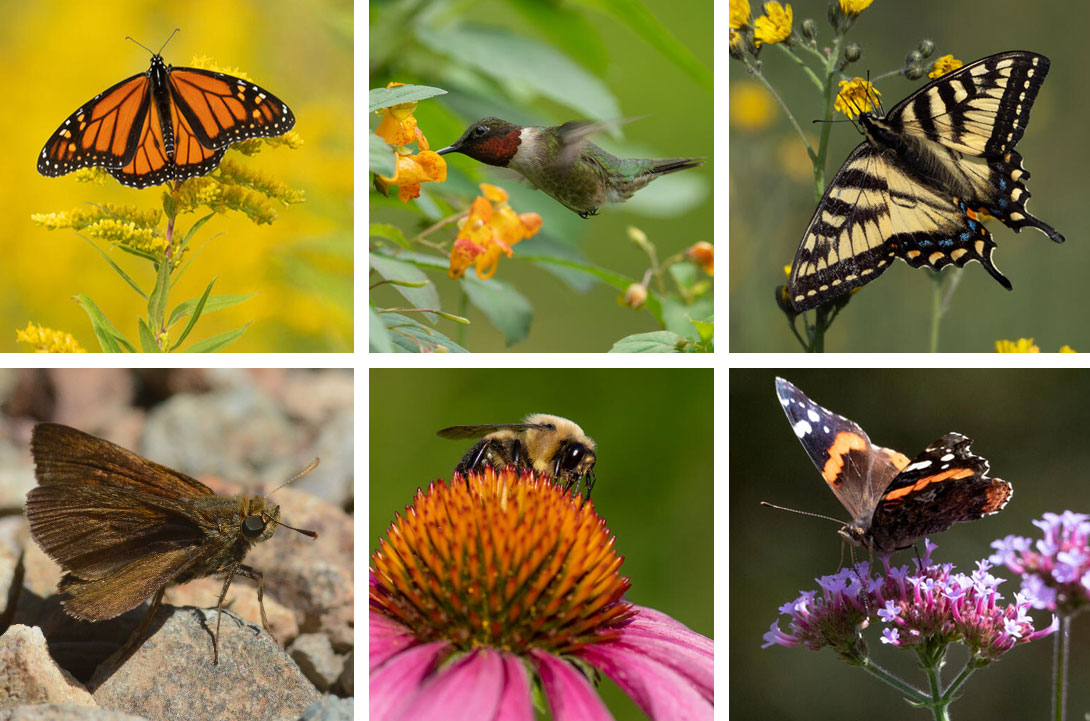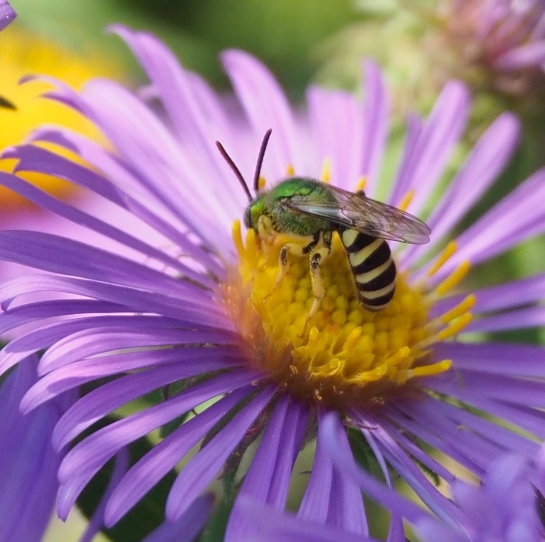How to grow a pollinator garden and bee part of the solution
Across Canada, bees, flies, moths, butterflies, wasps, some beetles and even hummingbirds depend on flowering plants for food. These plants, in turn, are dependent on the feeders to carry their pollen from plant to plant so they can reproduce.
We, of course, also depend on this pollination process for fruits, vegetables and other flowering plants that help support ecosystems.
It’s really a win-win-win. Or it should be.

Sadly, pollinator population size and diversity is on the decline due to habitat loss, invasive species, pesticides and disease. Conserving pollinators is critical — and you can help!
An easy step you can take is choosing native flowering plants for your outdoor spaces and/or growing pollinator-friendly gardens.
What is a pollinator garden and why native plants?
A pollinator garden features flowers that bloom throughout the seasons and provide food and shelter for insects, birds and other animals. These gardens can range in size from a large bed in a community park to a small container garden at home.
Native plants are important because they are well-adapted to the climate in their particular region and have deep reciprocal relationships with pollinators that are also native to that place. Perhaps the best-known example of a plant-pollinator relationship in North America is the endangered monarch butterfly and the milkweed species it depends on for nectar to fuel its migration to Mexico as well as food and shelter for new generations of caterpillars. This case is far from unique — there are thousands of such tight plant-pollinator relationships in a healthy ecosystem.

If people in your community and across our country plant with pollinators in mind, this will make more food sources available to species impacted by loss of native plant habitats.
Want to learn more about growing native plants? Check out re:grow, our online destination for the growing native plant movement!
Five tips for a successful pollinator garden
- Research and choose a variety of native plants that will flower throughout the growing season
This will ensure that pollinators in your area can rely on a steady food supply of nectar and pollen. Examples of species that bloom in spring include native Geraniums (this genus includes 7 species that are native in various parts of Canada) and blue flag iris (native east of Alberta). Cardinal flower (native to Ontario, Québec, and New Brunswick) and native Rudbeckia, or coneflower, species (native from Saskatchewan to Nova Scotia) are good choices for summer and smooth blue aster (native from BC to Ontario) for the fall.
On re:grow, you can start your research by finding out which ecozone you are in, which will help you select native plant species that thrive in your location.
- Group plants of the same species together in patches
Planting, for example, three blue flag iris plants or four black-eyed Susans in a row or circle will ensure a stronger scent and more visible colour chunk to lure the associated pollinators to your garden compared to isolating single plants of each species.
- Create a water source for insects, birds and other creatures
An attractive birdbath, a water feature or simply a depression in the ground that holds water will provide this essential resource to your new neighbours. An unassuming mud puddle can supply nest building material for bees and birds and drinking water for butterflies.
- Leave the leaves
Simplify yard work in spring and fall by not removing spent flower stalks and dead leaves. By leaving some organic debris on the ground in fall, you’ll be providing shelter from the elements for young bees and other insects to grow and hatch in as well as food for wildlife and new seedlings in the spring. Delaying your spring cleanup until at least May allows pollinators to emerge from their shelter instead of being discarded in yard waste.
- Avoid using pesticides
The “right” insects will self-select and be drawn to the environment you’ve created. Plants are hardy when planted in their native range. They have natural defences against unwanted insects and are codependent on the kinds of insects and birds that you want to attract. To learn more about addressing non-native pests in your garden, visit re:grow.
Aren’t any flowers good enough for bees and butterflies?
While it’s true that you’ll see bees and butterflies visiting non-native flowers, they may not be getting what they need from these plants. You may be surprised to learn that some of the at local garden centres (sometimes even ones labelled “native” or “pollinator-friendly”) are hybrids or cultivars, meaning they have been selectively-bred by people. They are sometimes sterile or have been bred for flower appearance and not to provide the pollen or nectar that birds and insects need to flourish.

After co-evolving together for tens of thousands of years, our native pollinators have some very specific relationships with native plants. For example, one type of native sweat bee relies on evening primrose and another on Monarda, commonly known as bee balm. Native flowers can be just as beautiful and have as wide a range of colours and textures as the non-native plants that are commonly available.
How do I maintain a pollinator garden?
Once planted, a native plant pollinator garden requires very little work or expense to maintain. Some watering may be required to help the plants get established in the first season, but after that they adapt to their location. Leaving plant material where it falls over the winter will make natural mulch, nourish and protect plants as well as non-migratory bees and bugs. Visit re:grow to learn more about stewarding your native plant garden.
Join the re:generation!
Regenerating nature means facing biodiversity loss head-on. By growing native plants, you can make a meaningful, measurable difference. Join the movement and help re:grow Canada.


